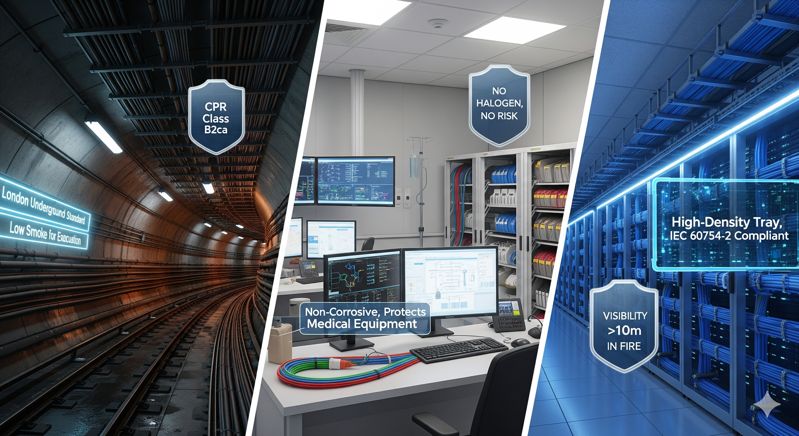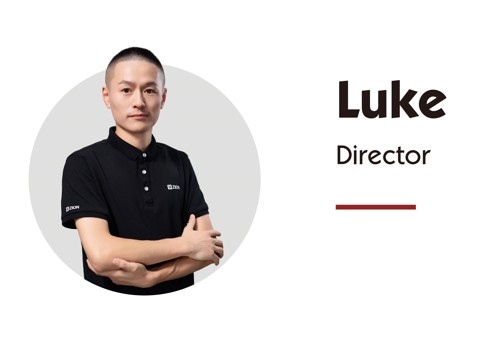Cable & Wire | High quality and excellent service at reasonable prices.
info@zion-communication.com
Author: Site Editor Publish Time: 28-08-2025 Origin: Site
Low Smoke Zero Halogen (LSZH or LSOH) cables are those that emit a minimal amount of smoke and no toxic halogen gases during burning.
It’s not merely a construction fact — it's an important safety measure that can't be ignored in modern building design.
We'll delve into the specifics of LSZH: its actual meaning, significance, and the best cable to choose for your project.
Fires can be initiated by just about anything, but smoke and hazardous gases are often far more lethal in the early minutes. Attempting to escape can be suffocated by smoke before the fire has a chance to rage.
In places with limited air circulation or crowded conditions — such as offices, hospitals, schools, or public transit centers — visibility and fume exposure may turn a manageable incident into a disaster.
That’s where LSZH cables address the issue.
Unlike standard PVC cables, which burn to produce thick black smoke and corrosive hydrogen chloride gas, LSZH cables are made from halogen-free materials that do not produce smoke or toxic fumes during combustion.
The "Low Smoke" that a cable may be described must pass some stringent testing protocols to show this ability of an ordinary wire or cable to block visibility in case of a fire.
The primary test is BS EN 61034-2, which evaluates the amount of light that can pass through smoke generated by burning 1 meter of cable in a 3m³ sealed chamber.
The cable is ignited using an alcohol flame (which produces negligible smoke itself).
Light transmittance is measured over time.
To pass, at least 80% of light must remain visible through the smoke.
This implies:
There’s a clear retreat way.
Emergency personnel can see through the smoke.
There’s a decrease in panic and disorientation.
Halogens are chemical compounds of more than one element — like chlorine, fluorine, bromine, or iodine — commonly found in many plastics like PVC.
When burning, they emit toxic, corrosive gases. For example:
A fire due to interactions of PVC sees perhaps the release of HCl.
HCl may cause hematological problems, eye anaphylaxis, and skin burnings.
That is, upon contact with water, it produces hydrochloric acid, which is aggressive to the electronics and structural elements.
A Zero Halogen cable emits less than 0.5% of chemical halogen gas when burned under controlled conditions BS EN 50267-2-1.
Using LSZH cables for various scenarios results in:
Better escape means.
Less equipment damage in fire-affected areas.
Lower repair expenses after fires.
Some people tend to think that the "flame retardant" label implies that all cables are fine in the fire. There is a portion of that, but it’s not all.
Fire retardant means that the cable won’t go up in flames very quickly. Flame does stop spreading once the source of fire is cut off. This is tested under BS EN 60332-1-2.
Even though a flame-retardant PVC cable will create dense smoke and emit toxic fumes when burned.
✅ True LSZH cables are:
Low halogen
Reduced smoke
Zero halogen
None of the components must exceed the threshold value to achieve a fire hazard mitigation.
Choosing the fitting LSZH cable is not only a question of safety but also has implications on performance, pricing, and longevity.
Search for cables that can be recognized to:
BS EN 61034-2 → Low smoke
BS EN 50267-2-1 → Zero halogen
BS EN 60332-1-2 → Flame retardant
These represent the minimum performance indicator of LSZH materials for the UK and EU.
The LSZH cables are very convenient for:
Heavy load population structures (hospitals, schools, stations)
Restricted compartments (fang tunnels, basement rooms, server cages)
Improvement of areas with sensitive electronics

However, never forget that:
Do not confuse LSF with LSZH: Low Smoke and Fume (LSF) usually indicates an addition of PVC, which is produced by its modification. It may make smoke reduction a bit better but still releases halogens.
Be sure of the fact that labels only provide vague information: Phrases like “green cable” or ‘eco-friendly” don’t ensure LSZH compliance.
Watch for cables that fake: Phony or substandard cables may be identical in shape but cannot withstand basic tests of safety. Get them from licensed sellers and ask for batch traceability.
A: A definite costier one — 15 to 30% higher from the start. You have to think, though, about the whole life cost; reduced injury liability, lesser equipment damage, and during faster emergency response. For any high-traffic areas, LSZH cable will pay for its self in terms of safety and compliance.
A: It is feasible, but the issue lies in practical tempering. LSZH has a bit lower mechanical toughness and perhaps not perfectly suitable for direct burial or tough industrial installations unless armored. It can be used wherever human safety and air quality are crucial.
A: That’s not how it is. Quality differences also occur from manufacturer to manufacturer. Before you make a choice, there is always to verify the independent test results and to ensure that the cable meets all three standards (smoke, halogen, flame). Can two cables labeled LSZH react so differently if a house burns down?
A: Not always a must but preferred for multi-storey structures, loft-type homes, or dwellings with smart systems and confined escape paths. Building rules (e.g., U.K.’s Part B of the Building Regulations) are progressively pushing low-hazard materials.
A: Request:
Ensure that you have all the test reports done in accredited laboratories.
Product certification (e.g., CPR Euroclasses)
Technical datasheet (the one designed by the manufacturer with standards references)
If they are not willing to, hire another contractor.
Feature | Standard | Why It Matters |
Low Smoke | BS EN 61034-2 | >80% light transmission = clear escape routes |
Zero Halogen | BS EN 50267-2-1 | <0.5% acid gas = safer air, less corrosion |
Flame Retardant | BS EN 60332-1-2 | Prevents fire from spreading along cables |
CPR Rating | Euroclass B2ca, Cca, or Dca | Required for construction products in EU/UK |
While picking LSZH cable is beyond just ticking the boxes on your schedule, the reality lies in saving lives from dangerous situations, compliance, and risk management.
Prior to your purchase:
Determine the specific standards the cable fulfils.
Clarify whether you need the basic LSZH or the fire performance data.
Work by suppliers who follow the process of documentation tracing and give technical support.
Alying the broad truth, standards, and project rating will give you less unsafe choices, prevent bad mistakes, and create a project that stands the scrutiny of today and emergency situations.
See if you require assistance in choosing an LSZH cable for your coming project. You can access a safety checklist or request a safety compliance review from our experts.
Contact us for more information

Luke Han is a Product Manager and Director at Zion Communication,
Specializing in fire, security, and alarm solutions. With extensive industry experience,
Dedicated to delivering high-performance, reliable products that are tailored to customer needs.
luke@zion-communication.com
0086 19883212162
